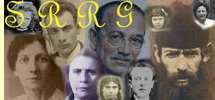|
Toledo at the turn of the 20th Century
Between the years 1860 and 1920, Toledo on the verge of becoming a viable city ultimately was "eclipsed by regional cities--including Detroit, Cleveland, and Chicago". The city had six railroad lines in 1860, grew wheat for grain (remained the fifth largest grain market in the country in the late twentieth century), was a shipping point for coal and iron in the 1870s ("the city became the world's greatest coal-shipping port in the 20th century").(6)
Toledo became a an important secondary petroleum refining industry after John D. Rockefeller "absorbed or eliminated hundreds of independent producers and refiners in the mid-1870s, establishing the facilities (Standard Oil) in Cleveland."(7)
Changes in technology and methods of refining steel, resulted in the industry centering its concentration "to the east in the Pittsburgh-Cleveland-Youngstown triangle because it was closer to the Connellsville coal found near Pittsburgh."(8)
Toledo city leaders launch a program to attract manufacturers.
"Milburn Wagon Company moved from Mishawaka, Indiana (near South Bend) to Toledo in 1873. By 1875, the Milburn works--supposedly the largest producer of farm vehicles--turned out 65 different kinds of wagons. During the Spanish-American War, the firm was a principal supplier of military vehicles. A by-product of the company was the development of the "bicycle industry". By 1898 there were 22 bicycle manufacturers and nine makers of accessories in operation in the city". But what was to become a Toledo pattern, --"an unlucky circumstance of simply being in the wrong industry at the wrong time, the automobile came into use which caused the complete collapse of the bicycle business throughout the country. During WW I, the Milburn Wagon Company began manufacturing electrified cars and trucks but unable to compete with gasoline engines, went out of business in 1922.
Between 1870 and 1900, Toledo's million-dollar industries [those producing products over that amount in value during the year] increased from two to eight. But cities such as Chicago, Milwaukee and St. Louis surpassed this amount many times over. "In Ohio, Cincinnati's million-dollar industries increased from twenty in 1870 to 31in 1900. This reality caused local promoters in the twentieth century to shift their emphasis from Toledo as the future great city of the world to Toledo as a prosperous secondary city--a good place in which to work and live.
Although lagging relatively behind other places, Toledo's industries did expand. Among the notable successes were industries based on new technological processes, particularly in glass production. A new city title was applied in the 1890s. [Toledo--Glass Center of the World] acquired a measure of permanent validity in the 1900s."
In 1887, the New England Glass Company of Cambridge, Massachusetts , owned by Edward Drummond Libbey moved to Toledo.
In the early years in Toledo, however, the Libbey Company had problems manufacturing and selling its cut glassware products--mainly vases, bowls and lamp stands. Among the glassworkers recruited from the Wheeling area was the mechanically able Michael J. Owens. After he moved to the Toledo plant, Owens worked out the techniques to use machines in glass production instead of the costly hand-blown method, first for light bulbs and in 1901 for bottles. It was a revolutionary development in the growth of the beverage and food industry.
Other Owens' inventions included producing sheets of glass in a "continuous flow, a fundamental contribution to the flat-glass industry. A third innovation occurred in an effort to develop new products during the 1930s' Depression. The manufacture of practical glass threads in various sizes--today's familiar and widely used fiberglass--fulfilled a long-time dream.
Another significant industrial development was the city's rise as a secondary automobile center. At first the city local leaders predicted it would be the "primary center.
Albert A. Pope of Hartford, Connecticut, was America's largest producer of bicycles in the late nineteenth century. He diversified into producing electric cars in 1896. Reluctantly, he converted to gasoline vehicles at his large plant on Central Avenue in Toledo in 1903. The factory turned out a luxury gasoline model--the Pope-Toledo. It was priced from $2,800 to $11,000 [in contrast to Ford's well-under-$1,000 cars of the era]. He also produced a less expensive Pope-Hartford in Hartford and Waverly Electric in Indianapolis.
The Toledo company employed between 1,200 and 1,500 workers. When it faced strikes in 1906 and 1907, Toledo's reform government under Brand Whitlock did not provide the customary support manufacturers usually received in employing strikebreakers. As a result, the union received highly favorable settlements that drove the Pope Company to the wall. It sold its Toledo plant to John North Willys' Overland Company in 1909, and the national Pope Company went into receivership in 1913.
After acquiring the Pope plant, Willys moved all its operations from Terre Haute and Indianapolis, Indiana, to the Toledo site. Willys became a major automobile producer. In 1915 the company's 91,780 units were exceeded only by Henry Ford, and by 1923 its plant was the largest single automobile factory in the world".
|
Home -
Introduction -
Prologue -
Preface -
Table of Contents -
Chapter 1 -
Chapter 2 -
Chapter 3 -
Chapter 4 -
Chapter 5 -
Chapter 6 -
Chapter 7 -
Chapter 8 -
Chapter 9 -
Chapter 10 -
Guest Book -
References
|
|




